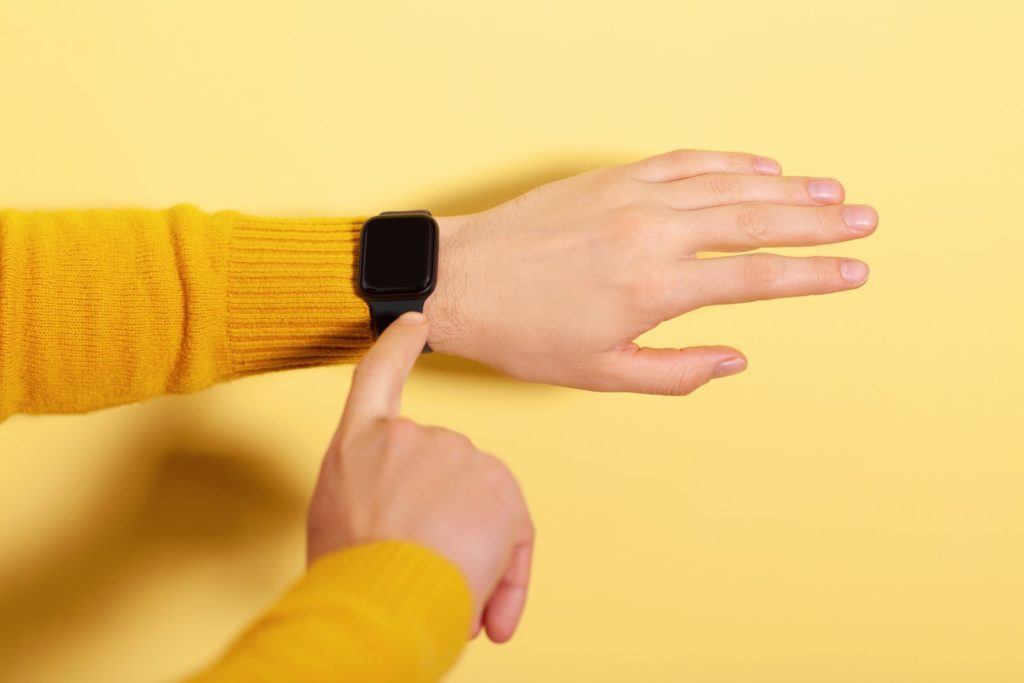We all have alerts. The ding. The ring. The buzz.
But, have you ever thought about what those alerts on our watches and other wearables mean — and do — to us?
If you think wearables don’t impact you beyond their intended purpose, think again. Those rings, dings and buzzes mean far more than you know.

How a wearable impacts us
Nothing is private anymore. Let’s first take a look at privacy. Similar to our phones, the minute you buckle that wearable piece of technology around your wrist, you’re forfeiting your privacy. The companies who make these wearables and apps are actually quite brilliant — we give away our personal information to companies and don’t think twice about it.
Immediately, the wearable reports your geolocation. It knows where you are and what you’re doing at all times. If you’re wearing an Apple Watch and walk into a store, soon after you will start to get advertisements based on that. Why? Because your personal data gathered from these apps and wearables is being resold. It’s one of many trade offs for having technology attached to you at all times.
Not only that, but if you’re using a fitness app, that information is likely being sold to insurance companies. Not so fit? Your insurance rates may raise because they know you’re not hitting the coveted 10,000 steps a day or working out. Even if the information is wrong.
For example, I go on the treadmill daily, but on my Apple Watch, there is the prompt to hit your fitness goals and close circles to signify my goals have been met. Nearly all of my friends can’t go to bed without closing those circles. Me? I just don’t wear my watch, so I never close them.
Insurance companies can now know if you’re working out, what your heart rate is, if you have any issues and more. While it’s helpful for doctors if you’re keeping track, the better thing to examine is if this information that is so easily distributed — this utter invasion of privacy — is helpful to you.
I’m betting giving up that personal information isn’t.
We’re being conditioned. Every ring, buzz, and ding you get are notifications pushed to you. It’s time to stand up. It’s time to breathe. While some are pushing you into creating positive behaviors, others are not.
These noises are all behavioral cues or what we call in psychology, classical conditioning.
Every time you get a notification, your brain is alerted to anticipate something, pairing that alert to a message or email that brings you joy. In turn, this awareness puts our brain on a heightened alert. In kids, you’ll notice they lose focus quicker. I compare it to watching a cartoon in the 70s or 80s versus today: everything has to be faster to this new generation.
We’re always in a state of anticipation. Did someone respond to your text? Did you need to check the message you just received?
By utilizing a wearable, there’s an unspoken agreement that you’re always available, alert and responsive.
In fact, wearables result in us being in a hyper alert state all the time. That Apple Watch communicates to others that we are always reachable. When this happens, it’s important to be intentional with your responses. Communicate in a manner that suits you. Create boundaries regarding response time.
It impacts our self-worth. Wearables like the Apple Watch can impact our status and our self-worth. My Watch was a gift, so I didn’t realize that there are different versions. One version of the Watch has a red dot, meaning it isn’t tethered to a phone but has its own cellular program. That red dot can mean a lot to people who value monetary items and technology. It can also cause people to feel like they aren’t enough if they don’t have their own Watch with a cell signal.
For teens, it’s all about how they perceive themselves. This can also be a cause of concern given their fragile sense of developing identity. They assume everyone is looking at them and therefore their status is amplified versus an adult who may not care if they have a cell plan for each piece of technology they own.
Do you want to help reduce the negative impacts technology imparts on your family? Sign up for our Home Program today and make technology a positive experience.




